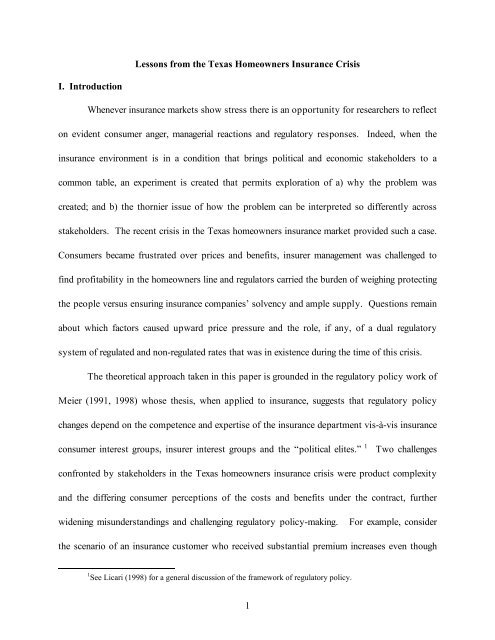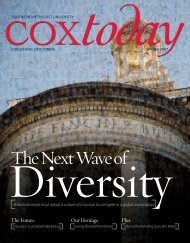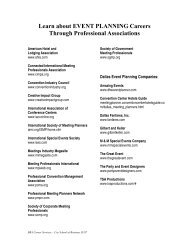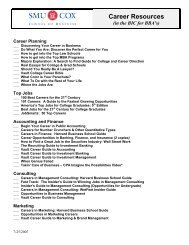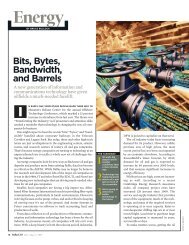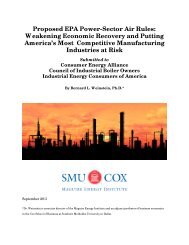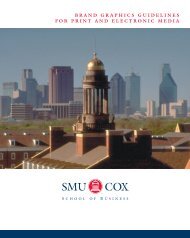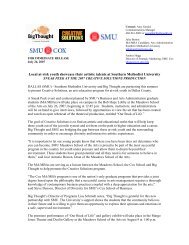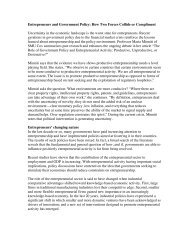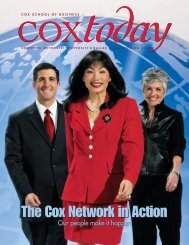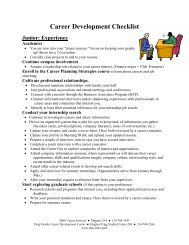Lessons from the Texas Homeowners Insurance Crisis Bob Puelz ...
Lessons from the Texas Homeowners Insurance Crisis Bob Puelz ...
Lessons from the Texas Homeowners Insurance Crisis Bob Puelz ...
Create successful ePaper yourself
Turn your PDF publications into a flip-book with our unique Google optimized e-Paper software.
I. Introduction<br />
<strong>Lessons</strong> <strong>from</strong> <strong>the</strong> <strong>Texas</strong> <strong>Homeowners</strong> <strong>Insurance</strong> <strong>Crisis</strong><br />
Whenever insurance markets show stress <strong>the</strong>re is an opportunity for researchers to reflect<br />
on evident consumer anger, managerial reactions and regulatory responses. Indeed, when <strong>the</strong><br />
insurance environment is in a condition that brings political and economic stakeholders to a<br />
common table, an experiment is created that permits exploration of a) why <strong>the</strong> problem was<br />
created; and b) <strong>the</strong> thornier issue of how <strong>the</strong> problem can be interpreted so differently across<br />
stakeholders. The recent crisis in <strong>the</strong> <strong>Texas</strong> homeowners insurance market provided such a case.<br />
Consumers became frustrated over prices and benefits, insurer management was challenged to<br />
find profitability in <strong>the</strong> homeowners line and regulators carried <strong>the</strong> burden of weighing protecting<br />
<strong>the</strong> people versus ensuring insurance companies’ solvency and ample supply. Questions remain<br />
about which factors caused upward price pressure and <strong>the</strong> role, if any, of a dual regulatory<br />
system of regulated and non-regulated rates that was in existence during <strong>the</strong> time of this crisis.<br />
The <strong>the</strong>oretical approach taken in this paper is grounded in <strong>the</strong> regulatory policy work of<br />
Meier (1991, 1998) whose <strong>the</strong>sis, when applied to insurance, suggests that regulatory policy<br />
changes depend on <strong>the</strong> competence and expertise of <strong>the</strong> insurance department vis-à-vis insurance<br />
consumer interest groups, insurer interest groups and <strong>the</strong> “political elites.” 1 Two challenges<br />
confronted by stakeholders in <strong>the</strong> <strong>Texas</strong> homeowners insurance crisis were product complexity<br />
and <strong>the</strong> differing consumer perceptions of <strong>the</strong> costs and benefits under <strong>the</strong> contract, fur<strong>the</strong>r<br />
widening misunderstandings and challenging regulatory policy-making. For example, consider<br />
<strong>the</strong> scenario of an insurance customer who received substantial premium increases even though<br />
1 See Licari (1998) for a general discussion of <strong>the</strong> framework of regulatory policy.<br />
1


